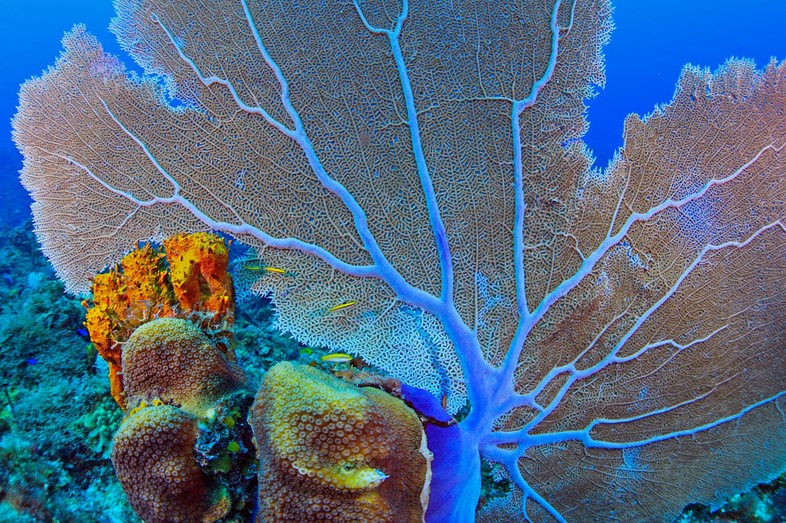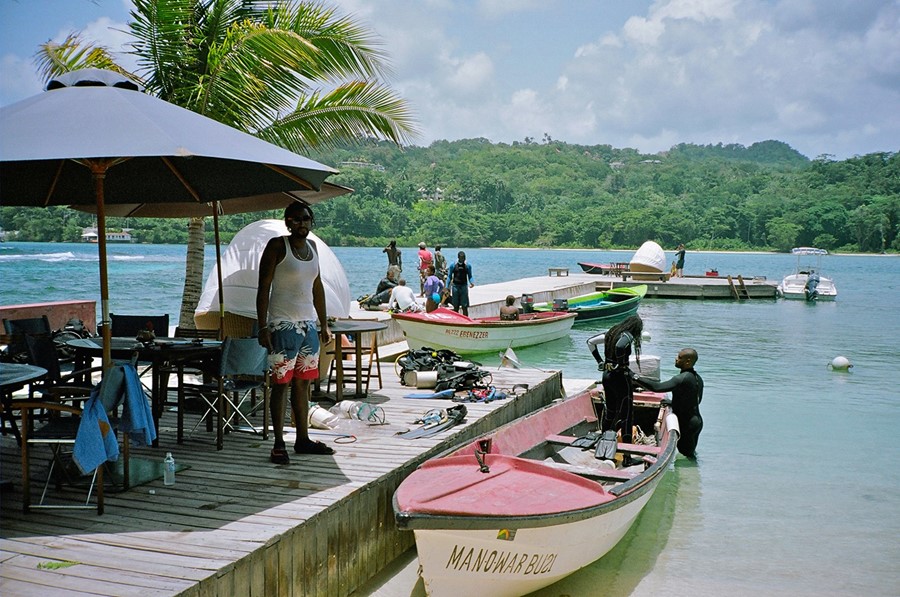AnOther visits Jamaica to investigate the eco-conservation project uniting creativity and science
When Swiss philanthropist and collector Francesca von Habsburg founded Thyssen-Bornemisza Art Contemporary in Vienna more than a decade ago, her aim was to commission projects which would push the art industry into new, uncharted territory. Nowadays it’s one of the most important cutting-edge collections in Europe, collaborating on projects such as Olafur Eliasson’s Green Light, which saw the public sale of €250 lamps that had been assembled by refugees as part of a programme of workshops on ideas about art, migration and citizenship.
Her latest project, TBA21: The Current, created in collaboration with curator and social change activist Markus Reymann, was inspired by her escalating awareness of the decline of the ocean habitats through her passion for scuba diving. In 2015, the focus of TBA21 shifted to tackle climate change. Conceived as a floating academy, the foundation curates annual expeditions and gatherings of artists, scientists, curators and writers, to collaborate on migratory multidisciplinary projects in an effort to save the world’s seas and oceans.
TBA21: The Current is part of a wider wave of trends in contemporary art towards sustainability and responsibility. Now that the mist is clearing, the money-crazed, self-obsessed art trends and markets that plagued the 90s and 00s are finally showing their vulgarity, and artists, curators and the public are looking for something with a conscience. The Current does just this; by taking art out of the studio and science out the lab, collaborative ideas are explored on the Dardanella, a research vessel funded by the foundation, at their annual convenings and across the world via collaborative projects.
The first research trip was orchestrated in 2015 by international curator, professor of contemporary art and director of the Centre for Contemporary Art Singapore, Ute Meta Bauer, who led an expedition of artists and scientists to Papua New Guinea. The next will be in June, to French Polynesia. In March 2016, the trip’s members met in Jamaica, along with other artists, scientists and curators working with ecology preservation, to share and discuss their work. The programme included thematic discussion tables, outreach programmes with local school children building kites from refuse, and talks by artists such as Lucy Orta about her OrtaWater project, which pumps water from sources like the Venice Canals or Huang Pu River in China into the gallery, through a purification sculpture, making it drinkable for the audience.
TBA21 is pushing the boundaries of what constitutes an art exhibition; it is confined neither by time, nor space, and cites the journey itself as the product. Its impact is only measurable by the emotional effect it can have on the audience (who, it is hoped, become participants by acting to save the oceans) – thus, it stands outside the financial conventions of the commercial art market. So far, TBA21 has initiated projects such as Treasure of Lima, which saw a treasure chest of art (featuring the likes of Marina Abramović and Ed Ruscha) being buried off the coast of Costa Rica. The chest was only retrievable through use of a set of GPS coordinates which were, in turn, encrypted and turned into a sculpture by the Dutch artist Constant Dullart. It was a mise en abyme of mystery, enlivening the idea that the ocean (and the myriad mysteries it contains) is our eternal keeper as well as our sustainer.

NGOs, charities and think tanks are preoccupied with coming up with strategies to combine the arts with social causes, looking for new methods to attract an apathetic audience towards social and environmental change. Through its work, TBA21 is commissioning and disseminating the kinds of ideas that can inspire people; its work humanises the charts, graphs and journals of scientists. They are expertly capitalising on the power of art as a tool to ignite compassion among their audience, alongside establishing a communal environment where everyone is a participant in the project, and thus responsible for the outcome.
It is often argued that adding art to science creates an extra, unnecessary facet, slowing down the production of tangible results and physical changes. Some projects have a more obvious and logical result, but the merging of humanities and sciences through TBA21 creates a double-edged sword with which one of the major issues facing both this and future generations, can be slayed.
For more information, see TBA21: The Current.
